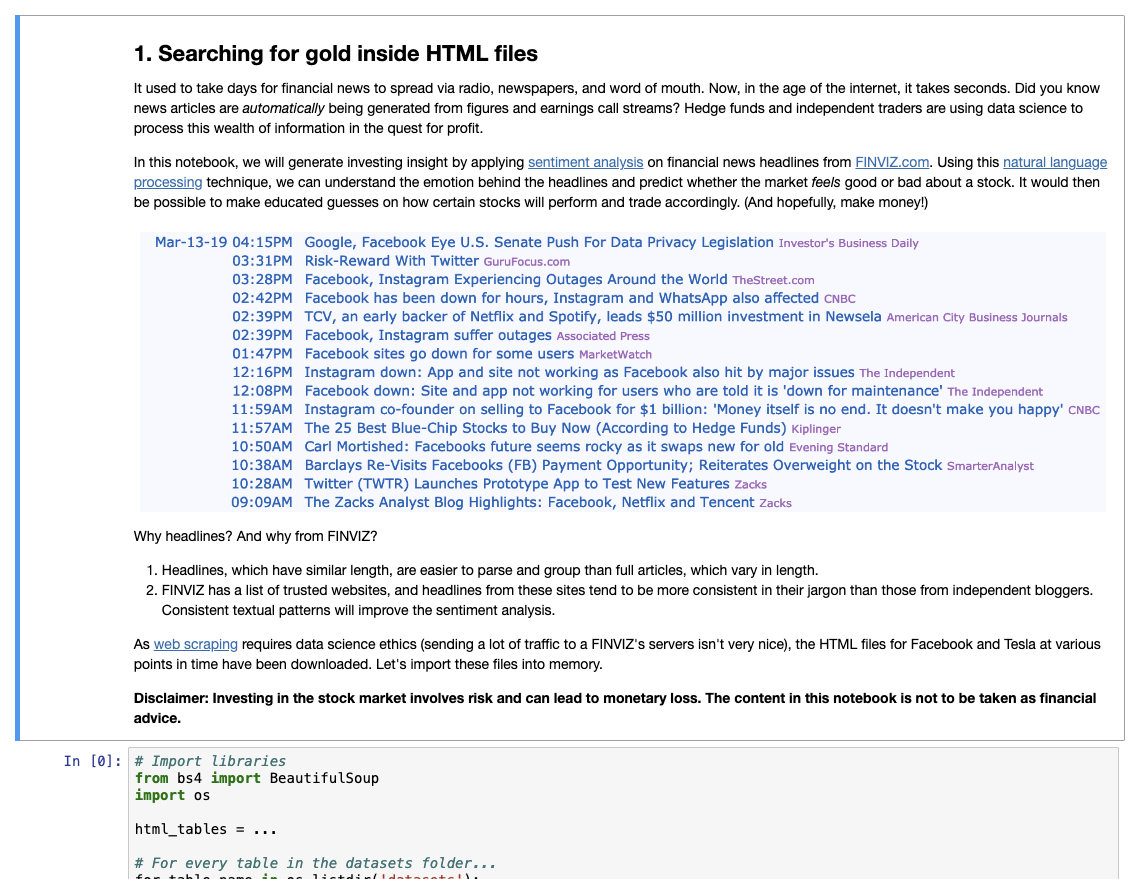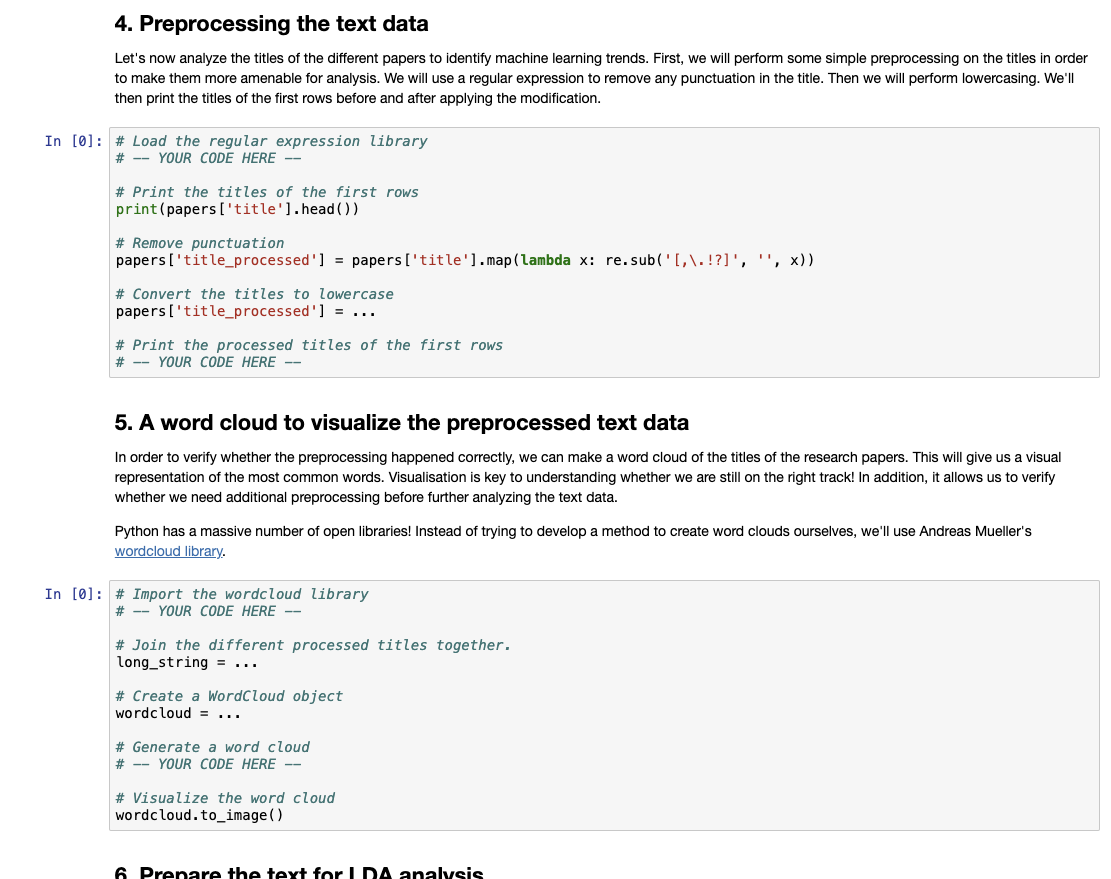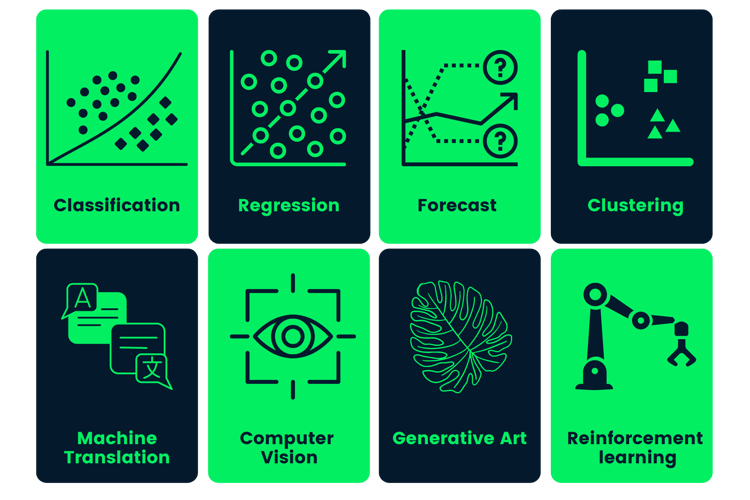Course
One of the best ways to land a job in the field of data science is to build a portfolio with data science projects that effectively show your technical skills. With the boom of ChatGPT, showing the recruiter that you can solve NLP problems has become more important than ever.
In this article, I will show you seven examples of NLP projects for all levels, from the aspiring data scientist to the experienced professional. Let’s get started!
Looking to improve your NLP skills? Start our Natural Language Processing in Python Track today.
Why Start an NLP Project?
There are a lot of reasons why you should try to solve an NLP task. The first is the market demand. Large Language Models (LLMs), like ChatGPT, captured the attention of all kinds of organizations, meaning they want to invest in these new tools and need people who can demonstrate an understanding of natural language processing.
Furthermore, an NLP project can help you:
- Learn and add a new skill to your CV.
- Build a portfolio of projects that demonstrate your skills and your ability to solve a different range of tasks.
- Show that you keep updated about the new advancements.
NLP Projects for Beginners
These NLP projects are for people starting their data science journey. In these projects, you can master NLP basic concepts, like text processing techniques, bag-of-words, and tf-id.
If you need a refresher on NLP, you can check out our Introduction to Natural Language Processing in Python Course. It can also be helpful to take our Supervised learning with scikit-learn Course to learn machine learning techniques to solve supervised problems.
1. Extract stock sentiment from news headlines
Sentiment analysis is one of the most popular NLP projects. It consists of predicting if a piece of text is positive, negative, or neutral. Understanding the sentiment can bring insights for your business to monitor if there is satisfaction/dissatisfaction with your products.
In the Extract Stock Sentiment from News Headlines project, you will train a sentiment analysis model on the financial news headlines from Finviz. First, you’ll clean the text, and then you’ll apply machine learning techniques to detect if there is a good feeling about the stock or not.

An example from this NLP project
2. Who's Tweeting? Trump or Trudeau?
Another popular project is the data analysis of tweets since Twitter allows to download data using its robust API.
In the Who’s Tweeting? Trump or Trudeau project, you will classify if the tweet is written by Donald Trump or Justin Trudeau. Compared to the previous project, extracting information from tweets can be more challenging because they are short and full of mentions, emojis, and hashtags.
Intermediate NLP Projects
After learning text cleaning, processing, visualization, and application of machine learning models for classification tasks, it’s time to pass to the next level. In the following projects, you will learn three different applications of natural language processing: topic modeling, named entity recognition, and recommendation systems.
3. The Hottest Topics in Machine Learning
NLP techniques aren’t just limited to dealing with labeled datasets; they can also solve unsupervised problems. Topic modeling is one of the main applications for its ability to extract the most representative topics in a collection of documents, like reviews regarding products.
In the Hottest Topics in Machine Learning project, you will discover topics from research papers of NIPS, which is a prestigious machine learning and computational neuroscience conference held every year. The project can be divided into two parts: the pre-processing step and the identification of topics using the Latent Dirichlet Allocation (LDA).

An example from the Hottest Topics in Machine Learning NLP project
4. Resume analysis using Spacy
Named Entity Recognition is a task of Natural Language Processing that consists of identifying and classifying named entities present in a text document into predefined categories, such as person, organization, location, and date.
In the Resume Analysis using Spacy project, you will build a system that helps recruiters to manage effectively the CVs of candidates based on skills that are necessary for the job. The dataset is a collection of resumes taken from livecareer.com. In this project, the spaCy model will be used for recognizing entities in the resume.
5. Book recommendations from Charles Darwin
We are influenced by recommendation systems every day. When you buy a product on Amazon, you can see suggestions for products based on your tastes. The same happens when you watch a film on Netflix, and you have a list of movies based on past choices.
In the Book Recommendations from Charles Darwin project, you will build a book recommendation system based on their content. The data was taken from Project Gutenberg. Charles Darwin’s bibliography will be utilized to identify the books that might capture your interest.
Advanced NLP Projects
The data science projects focus on solving more advanced problems, like language translation and question-answering. You will train models based on transformers to solve each task.
6. English/Italian translator with Hugging Face model
Every year, language translation is becoming better and more accurate. This advancement is thanks to the development of sophisticated language translation techniques.
In the English/Italian Translator with Hugging Face model project, you will build your own translation application with Hugging Face, which is an AI platform that hosts a lot of large language models specialized in different tasks, including language translation. In this project, you pick this model to translate the text from Italian to English. This application is concretized using Streamlit.
7. Question answering with a fine-tuned BERT
Large language models, like ChatGPT, have brought enthusiasm to solving a huge variety of NLP tasks, including question answering. Asking a question and obtaining an answer quickly from a large language model can really speed up the work of people and focus on other challenging tasks.
In the Question Answering with a fine-tuned BERT project, you will fine-tune BERT on the CoQA dataset, which consists of a collection of 127 thousand questions with answers released by Stanford in 2019. The goal is to use the BERT model to answer questions based on the dataset provided.
Conclusion
That’s it! With these projects, you will acquire new skills and enrich your portfolio with NLP projects, which will make you more interesting to the recruiter who is searching for new talents. Based on the level, you can choose the project you feel is more suitable.
If you are interested in getting started with Natural Language Processing, the best way is to take a look at DataCamp’s Natural Language Processing in Python track. You can also check the Natural Language Processing tutorial.
FAQs
What is Natural Language Processing (NLP)?
Natural Language Processing (NLP) is a subfield of artificial intelligence (AI) that focuses on the interaction between computers and humans through natural language. It enables computers to understand, interpret, and generate human language in a meaningful way.
Who can benefit from working on NLP projects?
NLP projects can benefit a wide range of people, including data scientists, AI researchers, linguists, software developers, and students interested in AI and machine learning. These projects can also be valuable for professionals in industries like healthcare, finance, customer service, and marketing, where understanding and processing natural language data is crucial.
How do I choose the right NLP project based on my skill level?
Start by assessing your current understanding of programming, machine learning, and NLP concepts. Beginners should look for projects that focus on basic text processing and simple models, like sentiment analysis or spam detection. Intermediate learners can tackle more complex tasks involving entity recognition or machine translation. Advanced projects might include deep learning applications, question-answering systems, or projects that require significant data engineering.
What are some common pitfalls in NLP projects and how can I avoid them?
Common pitfalls include underestimating the importance of data preprocessing, overlooking the impact of biased data on model fairness, and neglecting to consider the model's scalability and performance in production. Avoid these by thoroughly cleaning and inspecting your data, actively seeking diverse datasets, and planning for deployment early in the project.
How can I improve the accuracy of my NLP model?
Improving NLP model accuracy can involve several strategies, such as using more data, trying different model architectures, fine-tuning hyperparameters, utilizing pre-trained models, and applying advanced text preprocessing techniques. Regularly evaluating your model with different metrics and adjusting your approach based on the results is crucial.
What are some common applications of NLP?
Common applications of NLP include sentiment analysis, chatbots, machine translation, speech recognition, text summarization, and information extraction. These applications are used in various domains, such as customer service automation, content analysis, language translation services, and voice-operated devices.
Are there any other projects that might be relevant to me?
We have many projects that are suitable for all kinds of interests and skill levels. Check out our:


